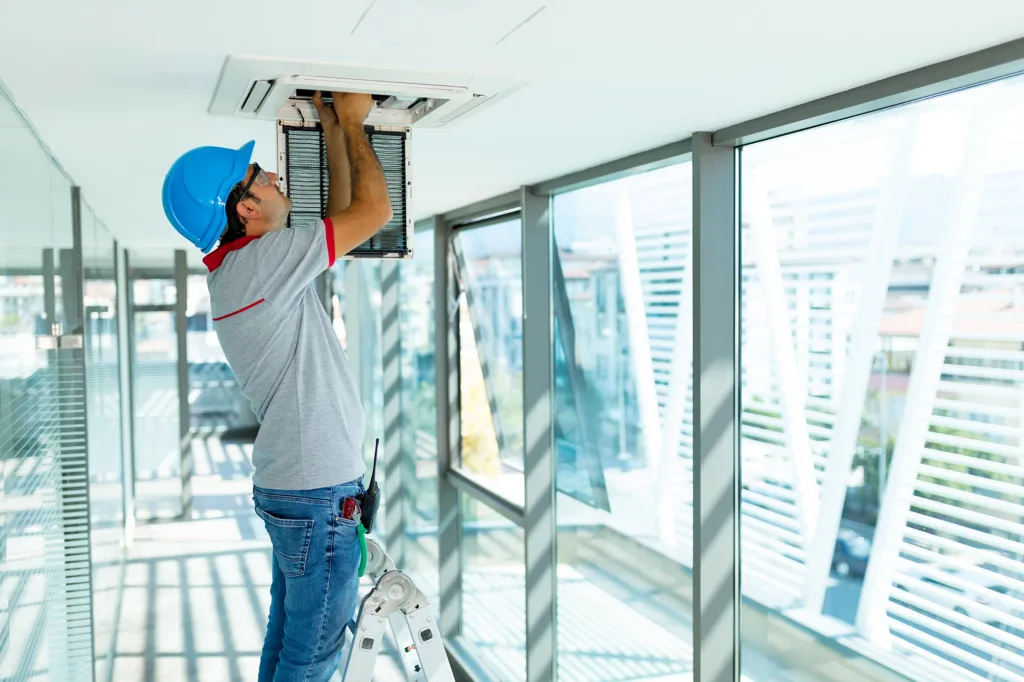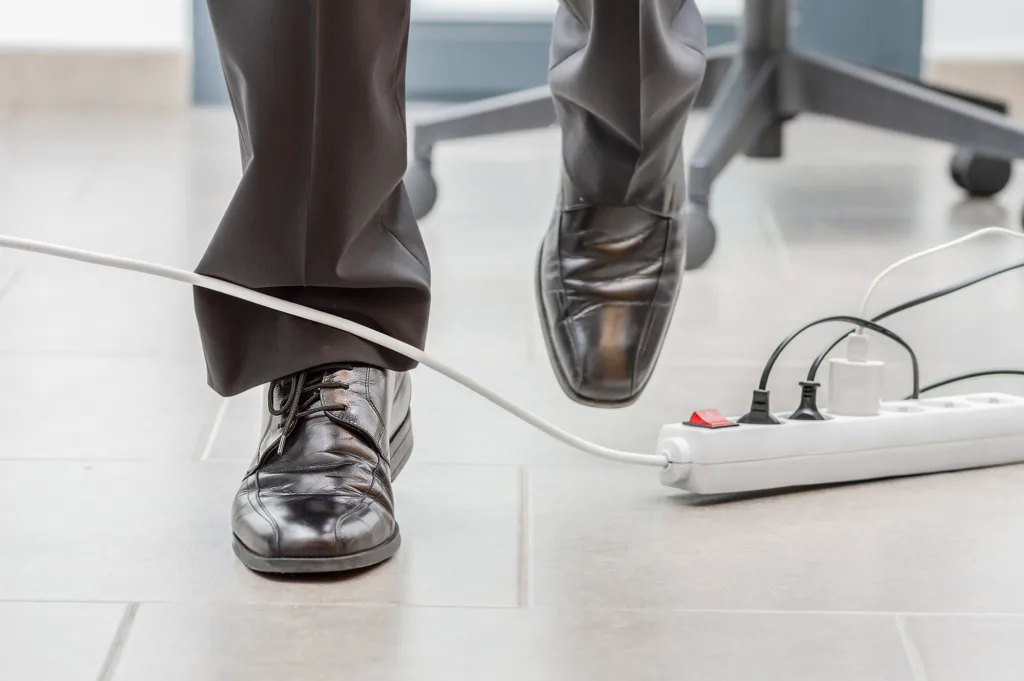Electrical issues in the workplace are more than just an inconvenience—they can disrupt operations, damage equipment, and pose serious safety risks. A faulty connection or overloaded circuit can escalate into a fire hazard if left unchecked. Businesses rely on stable electrical systems to power machinery, lighting, and essential equipment, making it crucial to address problems promptly.
Many electrical issues develop over time, often due to outdated wiring, excessive power consumption, or neglected maintenance. While some minor faults may seem manageable, they can indicate deeper, more serious hazards. Understanding the most common electrical problems in a commercial setting can help business owners and facility managers take the necessary steps to prevent disruptions and keep their premises safe.
In this guide, we’ll explore frequent electrical faults, how to troubleshoot them, and when to seek professional assistance.
Frequent Electrical Problems in the Workplace
Flickering or Dimming Lights
When office lights flicker or dim unexpectedly, it’s usually a sign of an underlying electrical issue. This could be caused by:
- Loose or faulty wiring connections
- Voltage fluctuations from an overloaded system
- Failing light fixtures or old ballasts in fluorescent lighting
Apart from being an annoyance, inconsistent lighting can impact productivity and employee well-being. In some cases, flickering lights indicate more serious wiring problems that may lead to overheating and fire risks. If the issue persists despite changing bulbs or tubes, it’s essential to have the electrical system inspected by a professional.
Overloaded Circuits and Frequent Breaker Trips
Circuit breakers are designed to prevent electrical overloads, but if they trip frequently, it suggests an excessive power draw or faulty wiring. Common causes include:
- Too many high-powered devices connected to the same circuit
- Extension leads and power strips being overused
- A deteriorating electrical panel struggling to handle the load
Ignoring breaker trips can lead to overheating, damaging equipment, and increasing the risk of electrical fires. Businesses should invest in commercial electrical assessments to ensure their circuits are properly rated for their power needs.
Learn more about commercial services
Faulty Outlets and Wiring Issues
Damaged or outdated electrical outlets can pose serious hazards in the workplace. Common warning signs include:
- Sparks or buzzing sounds when plugging in equipment
- Discoloured or hot outlets indicating overheating
- Plugs falling out of sockets due to loose internal connections
These issues may be caused by worn-out wiring, poor installation, or overloading. Ignoring faulty sockets can lead to electric shocks or even electrical fires. In older buildings, outdated wiring may no longer meet modern power demands, making a wiring upgrade essential for safety and efficiency.
Power Surges and Electrical Spikes
Power surges occur when there’s a sudden increase in voltage, which can damage sensitive electronic equipment. Common causes include:
- High-powered devices cycling on and off
- Lightning strikes or power grid fluctuations
- Faulty or outdated wiring failing to regulate voltage properly
Without proper surge protection, businesses risk expensive damage to computers, servers, and other essential equipment. Investing in surge protectors and upgrading old wiring can help prevent sudden failures and costly repairs.
Inconsistent or Non-Functional Commercial Lighting
Office and warehouse lighting plays a crucial role in maintaining productivity and safety. However, issues such as flickering, buzzing, or complete failure can indicate problems with:
- Poor wiring connections affecting voltage flow
- Ageing ballasts in fluorescent lights
- Incompatible bulbs or fixtures leading to inconsistent lighting
If lighting issues persist despite regular bulb replacements, it may be time to assess the entire electrical system. Upgrading to energy-efficient lighting solutions can enhance reliability while reducing energy costs.
Find solutions with commercial lighting

How to Address Electrical Problems Safely
DIY Safety Checks vs Professional Assistance
While minor troubleshooting steps like checking for loose plugs or resetting breakers can be done in-house, more complex electrical issues require a qualified electrician. Signs that a professional is needed include:
- Persistent electrical faults despite resetting circuits
- Burning smells, sparks, or visible damage to wiring
- Repeated power failures affecting multiple devices
Attempting DIY electrical work without proper expertise can lead to serious injuries or further damage. Businesses should always rely on certified professionals for repairs and system upgrades.
The Role of Regular Electrical Maintenance
Routine electrical inspections help prevent faults before they become serious hazards. Maintenance should include:
- PAT (Portable Appliance Testing) for workplace equipment
- Checking for overloaded circuits and faulty wiring
- Ensuring compliance with UK electrical regulations, such as those outlined in the Electricity at Work Regulations 1989
Regular assessments ensure that workplaces meet health and safety standards, reducing the risk of unexpected failures.
Schedule an inspection through contact us
Workplace Electrical Safety Tips
Preventing electrical hazards in the workplace involves:
- Avoiding overloading sockets – Use dedicated outlets for high-power equipment
- Keeping electrical panels clear – Ensure easy access for emergency shut-offs
- Using surge protectors – Protect sensitive devices from sudden power spikes
- Training employees – Encourage staff to report flickering lights, buzzing sounds, or burning smells immediately
By fostering a safety-first culture, businesses can minimise risks and maintain a reliable electrical system.
FAQs
How often should workplaces have electrical inspections?
Businesses should schedule an electrical inspection at least every five years, as recommended by UK regulations. However, high-risk environments such as factories or workshops may require more frequent checks.
What are the dangers of ignoring minor electrical issues?
Even seemingly small faults, like flickering lights or warm outlets, can indicate underlying wiring issues. Ignoring these signs may lead to overheating, power failures, or even electrical fires.
Can using extension leads cause electrical problems?
Yes, excessive reliance on extension leads can overload circuits and increase the risk of overheating. It’s best to install additional outlets where needed rather than overloading existing sockets.
Conclusion
Electrical safety in the workplace should never be overlooked. Common issues like flickering lights, overloaded circuits, and faulty wiring can escalate into costly and dangerous problems if left unaddressed. Routine inspections and professional maintenance help businesses stay compliant with safety regulations while preventing unexpected power failures.
For expert electrical services, upgrades, and emergency repairs, trust a professional team to keep your workplace running safely and efficiently.
Explore our services at Wave Electrical Solutions










